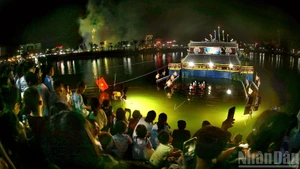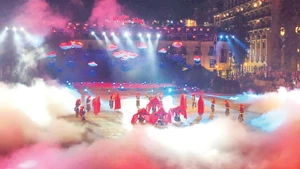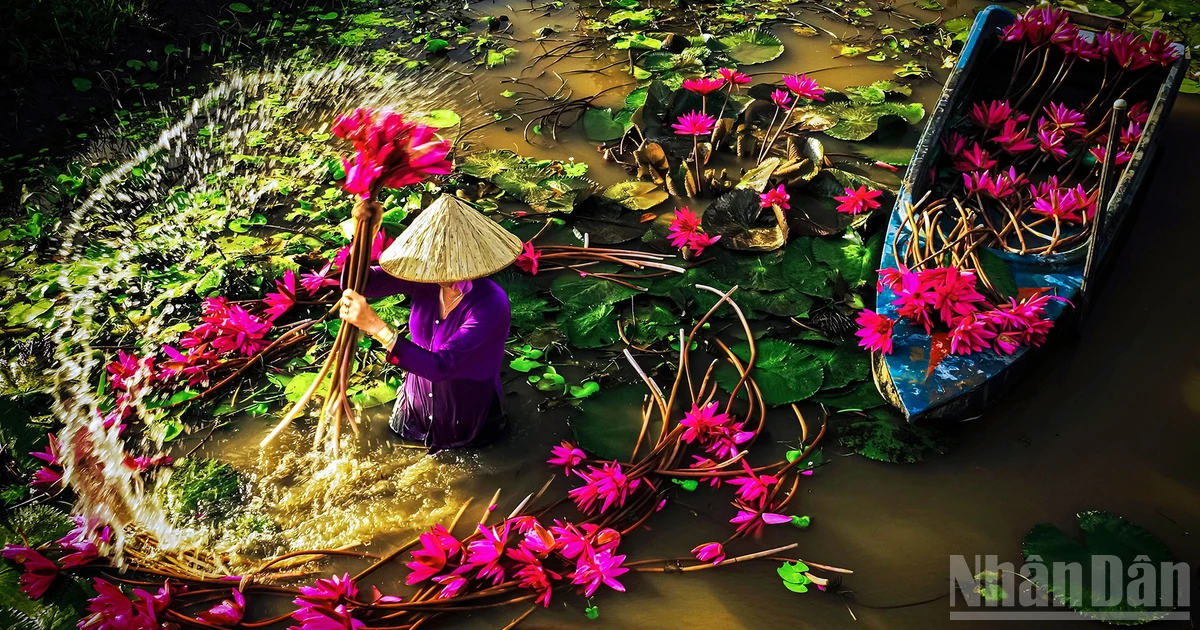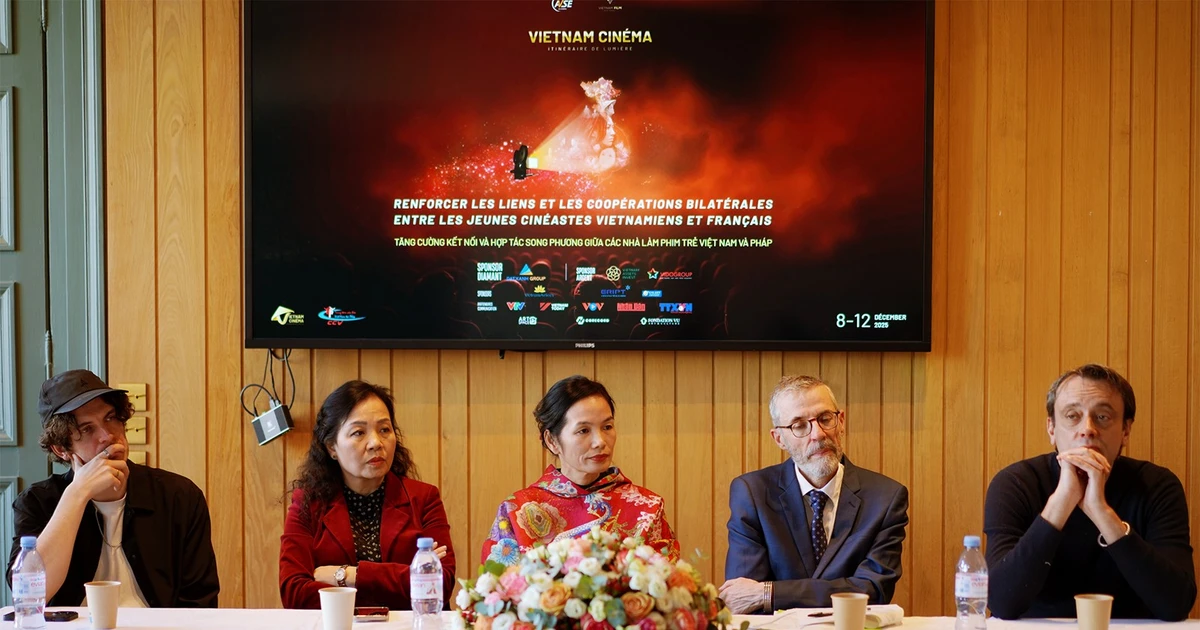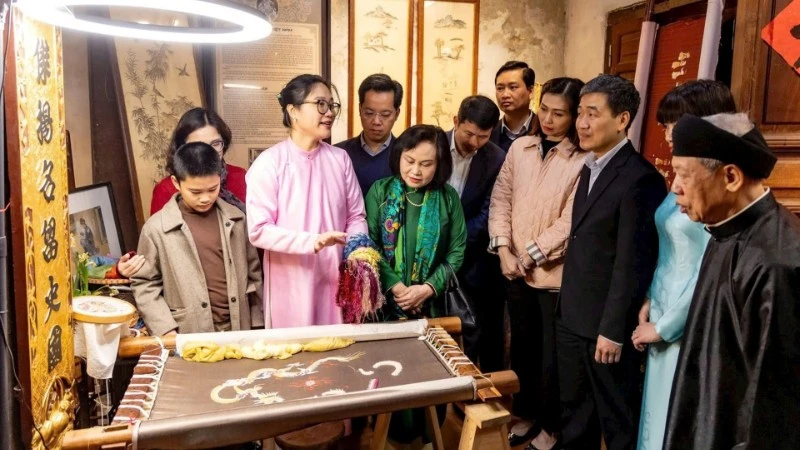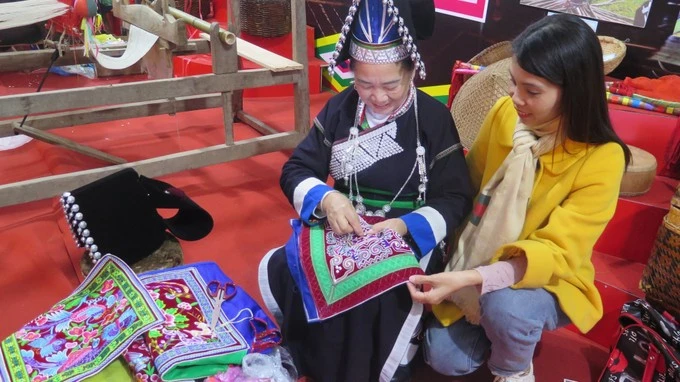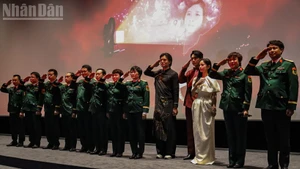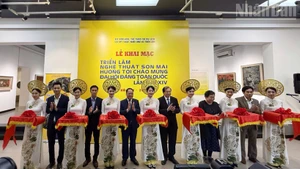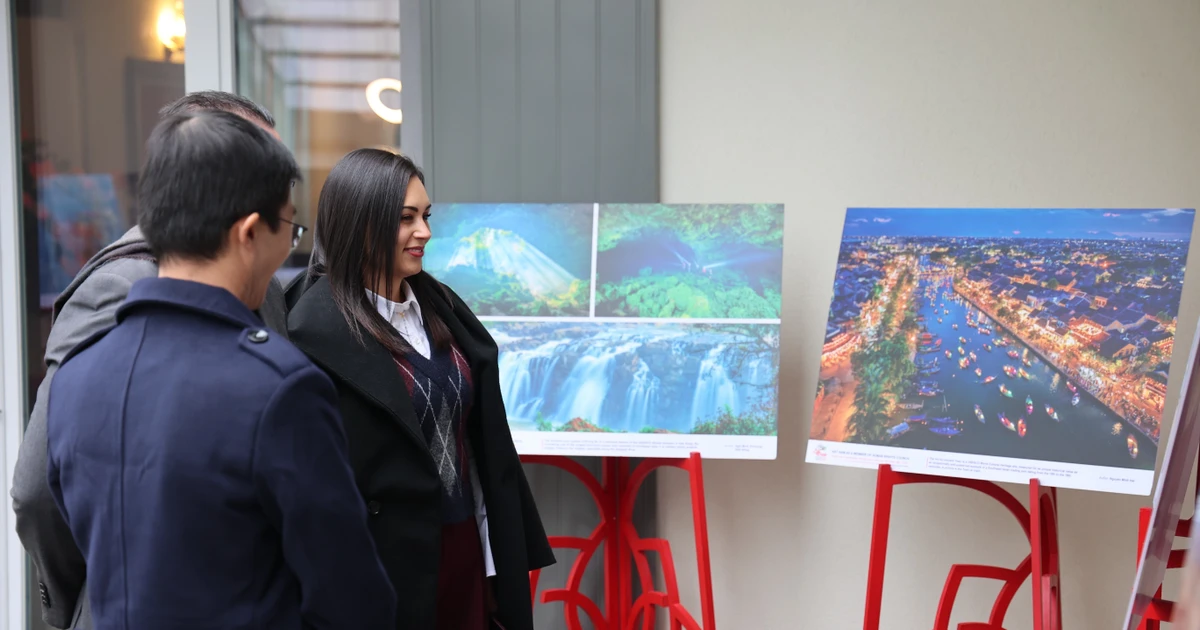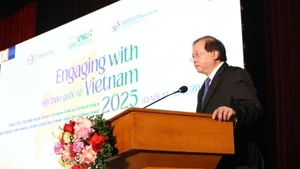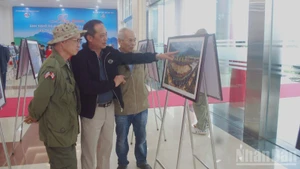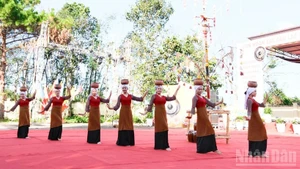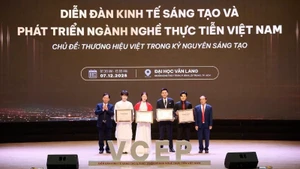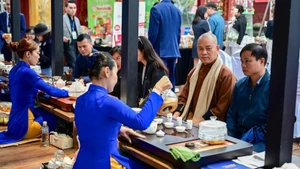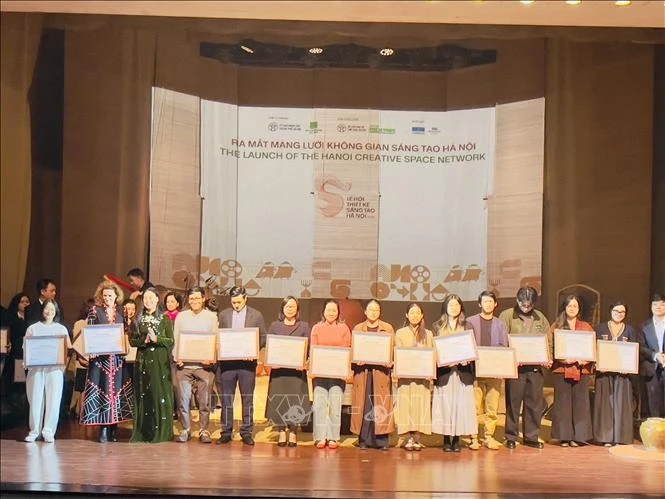Despite the ongoing economic challenges, the Ha Nhi people here persist in preserving their customs, traditions, and especially their traditional clothing as an indispensable part of their spiritual life and cultural identity.
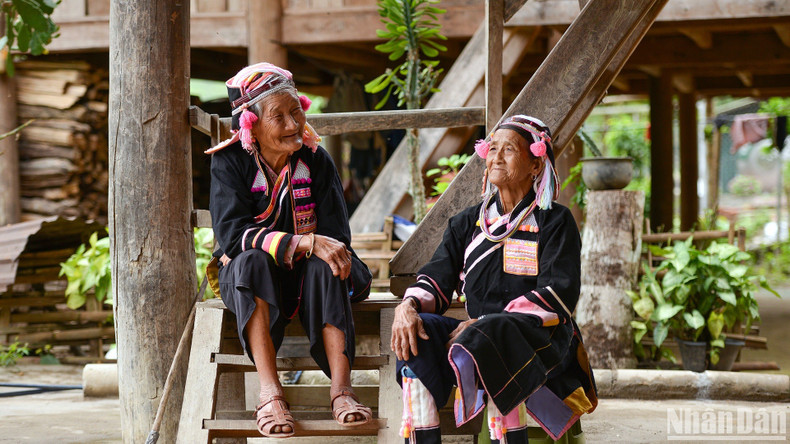 |
The traditional costumes of Ha Nhi women in Pa Pang carry distinctive characteristics.
The traditional attire of Ha Nhi women in Pa Pang has a distinct character. Its most recognisable feature is the deep indigo tone as the dominant colour, accented with delicate and intricate hand-embroidered patterns on handwoven linen fabric.
For Ha Nhi women, the traditional outfit is accompanied by a headscarf and various types of jewelry and accessories such as necklaces, bracelets, and earrings.
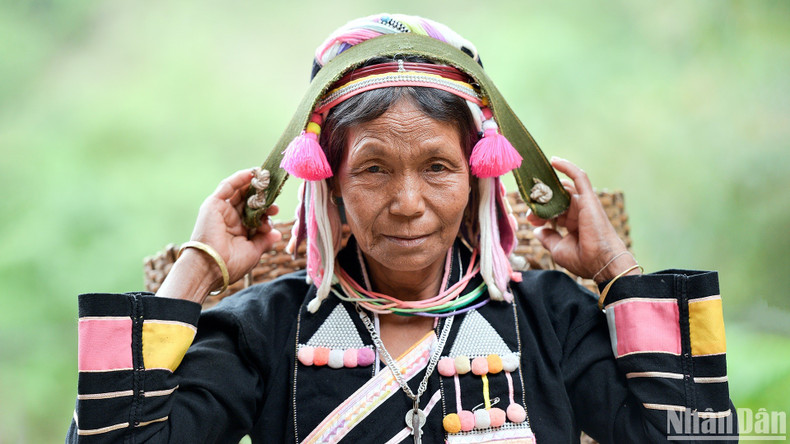 |
Traditional clothing is a visible part of everyday life.
Their garments are decorated with handcrafted motifs that mimic natural elements like leaves, floral patterns, and geometric shapes—symbols of fertility and community unity.
Men’s clothing is simpler and more modest, usually consisting of a long shirt and straight-legged indigo trousers.
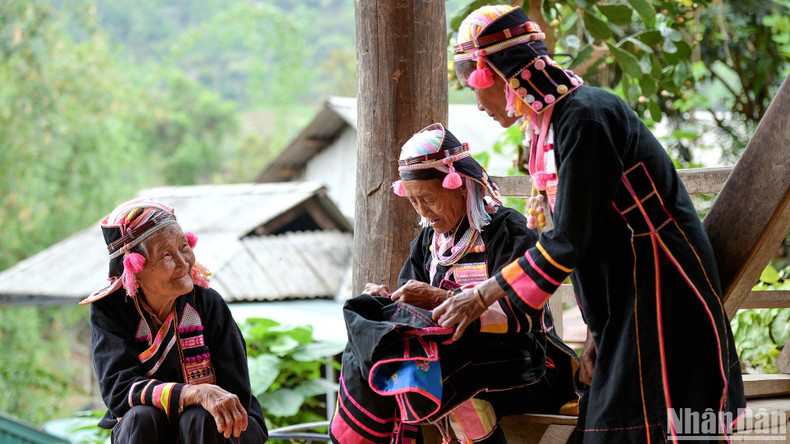 |
Traditional attire of the Ha Nhi people in Pa Pang.
Pa Pang is one of six villages in Nam Ban Commune, where 420 households of three main ethnic groups—H’Mong, Mang, and Ha Nhi—live together. Pa Pang remains a disadvantaged area.
The Ha Nhi community lives in a clustered settlement pattern. Their livelihood mainly depends on agriculture and is highly weather-dependent, which hampers sustainable development.
 |
The lives of Pa Pang residents mainly rely on agriculture.
In this context, the preservation and promotion of traditional culture face numerous challenges. Some outdated customs and practices still exist, negatively impacting the community’s economic, cultural, and social life, as well as its overall development.
 |
Skill training classes are needed to preserve Ha Nhi ethnic clothing.
In Pa Pang, traditional clothing remains present in everyday life, cultural activities, and community events. Preserving these garments is not just about keeping what already exists, but about "living with" the culture in the rhythm of modern development.
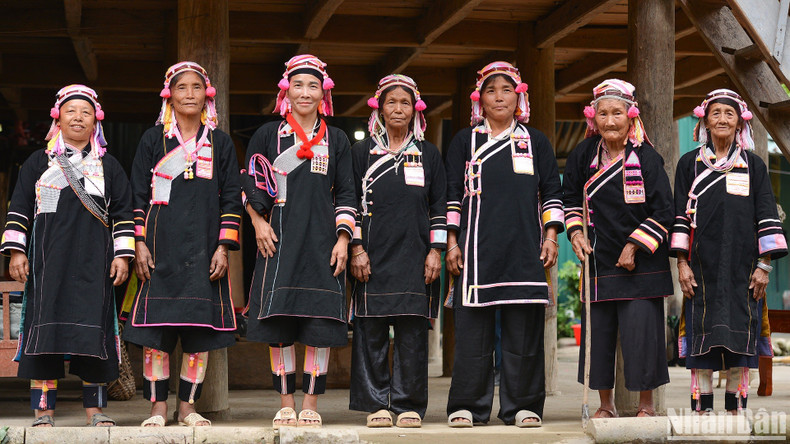 |
Ha Nhi people are closely connected to their traditional garments.
Today, the Ha Nhi people of Pa Pang are gradually adapting to modern life. Their indigo skirts, ancient rituals, and folk knowledge continue to be nurtured within the community.
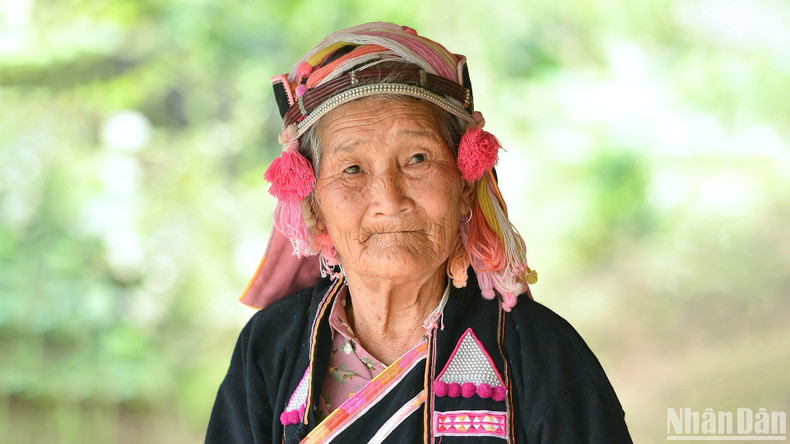 |
Artisans of traditional garment crafts deserve recognition.
To prevent this identity from fading, practical support is urgently needed from all levels and sectors—such as organising traditional embroidery and weaving classes, reviving cultural festivals with fashion shows, and investing in infrastructure for community-based tourism tied to indigenous culture.
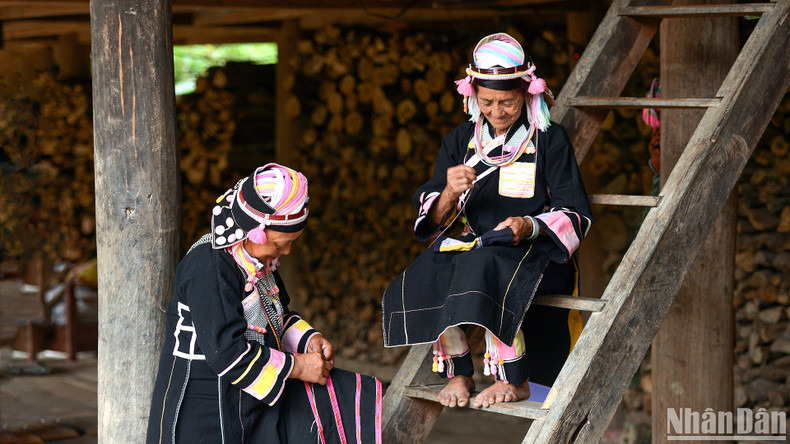 |
Preserving traditional clothing should be tied to promoting Ha Nhi culture in Pa Pang.
Additionally, integrating ethnic cultural education in schools and promoting the roles of youth and women in preserving identity are essential directions. Maintaining these unique colours in the era of integration is not only a duty but also a source of pride and responsibility for every resident here.
The Ministry of Culture, Sports and Tourism has issued Decision No. 209/QD-BVHTTDL approving the project "Preservation and promotion of traditional costumes of Vietnam’s ethnic minorities in the current period," to be implemented until 2030.
The project's goal is to preserve and promote traditional costumes of ethnic minorities, fostering pride and awareness in safeguarding and celebrating their cultural heritage.

